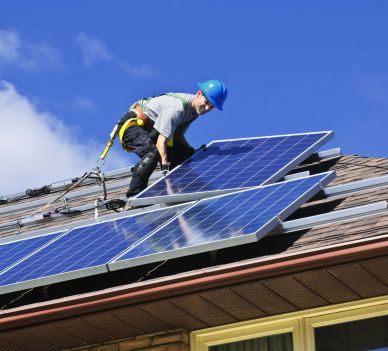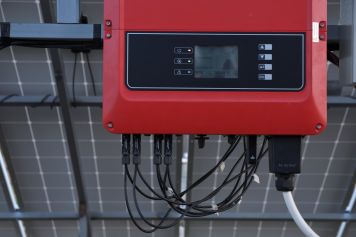Off-Grid Solar System Cost | How to calculate off grid solar system cost?
Solar energy is a vast topic in the world right now. People are starting to realize that renewable energy sources are better for the environment and save money on your electric bill. And one of the most popular ways to generate solar power is with an off-grid systems. So what exactly does that entail? Here’s everything you need to know about it!
How to calculate off-grid solar system cost?
Determine Your Energy Usage

To calculate the solar panel cost to install your off-grid solar system, you’ll need to determine your day-to-day energy use. It is recommended that you use a kWh meter to track this. However, if you don’t have one, your best bet would be to contact your utility company and ask for their average monthly bill.
Calculate Solar Panels Required
The next step is to calculate how many solar panels would be enough for your off-grid system. This will depend on the size of the home, the number of residents, and how much energy it uses. You should get about one solar panel for every 100 square feet as a general rule of thumb. You can also get panels that are around 2’x4′. However, if you’re planning on using the off-grid system to power your home entirely, then you’ll need to get more than just enough to cover the space of your roof.
Off-Grid Battery Costs
Whether or not you decide to make your system entirely off-grid, you will also need some solar batteries. These cost anywhere from $10,000 – $30,000 to install and come with a 10-year warranty.
Total Off-grid Solar Power System Cost
So now that you know how many solar panels and batteries would be best for your home, you can calculate the system’s total cost. So what will it cost to go off-grid? The average price is anywhere from $18,050 – $74,000. And this doesn’t include installation costs or any repairs to the system over time. So if you’re considering investing in an off-grid solar system, be sure that you can afford it and that your home is big enough to need the extra energy produced.
Off-Grid PV Solar System Cost by Size
10kW off-grid solar system cost
This system is appropriate for typical homes with above-average energy consumption. This is a good off-grid solar power system if you don’t want to spend a lot on a backup solution but just wish to go off-grid using only solar energy. For others, this setup offers all you need as long as there is enough sunlight. These off-grid solar systems range from $70,000 – $80,000.
5kW off-grid solar system price
If you live in a smaller home or apartment, then you may not need as much energy. This means that your off grid solar system cost will be cheaper than an average-sized house. In a moderately bright area, a 5kW solar system may power a smaller-than-average home with a backup system. At this scale, the system can produce enough electricity to meet the needs of most houses. The system may still be too small if you have high energy needs. For off-grid usage, a 5kW system can cost anywhere from $40,000 to $45,000.
1 kW off-grid solar system price (for tiny homes)
A 1 kW system will be the smallest option that is available. With this size, you’ll only be able to generate a few hundred watts of energy. This means that it will likely cost you more than $12,000 to get an off-grid solar system of this size. However, there are many benefits to going small with your off-grid solar system. For one, you can easily add to it if you find that you need more power later on. And a smaller system will allow you to save money on installation and other fees.
Components of an off-grid solar PV system
Components of a solar panel system
The essential components of a solar panel system that forms an off-grid system are:

- Solar panels – there are different solar panel systems, including monocrystalline, polycrystalline, and thin film. Each type has its benefits and costs. For example, monocrystalline panels have a higher initial investment, but they have a longer life.
- Inverters – this component changes the direct current from your panels into the alternating current used by appliances. There are two main types of inverters: string and micro. String inverters provide more power at a lower cost, while microinverters offer a higher degree of customization and flexibility. You should note, however, that microinverters come with a higher price tag.
- Batteries – this element is crucial as it stores the energy that you produce from your panels for use when the sun isn’t out. Battery capacity is measured in kilowatt-hours (kWh), and batteries are usually made of lead acid.
- Mounting equipment – this includes frames, brackets, and racking solutions. The type of solar panel system you choose will affect the kind of mounting equipment you need to buy.
- Electrical wiring is required to connect all of your components, and you must choose a suitable conductor for the job. For instance, most solar panel systems use aluminum wire, which is more affordable than copper. But if you want to maximize the amount of energy that your panels will be able to generate, choose a copper conductor.
- DC/AC disconnects are required when using a series inverter, and it’s essentially an on/off switch for your system. It ensures that the current produced by your panels cannot flow into electrical appliances.
- Other equipment – this includes lightning protection, grounding equipment, support structures, and other related items.
Components of a solar battery system
The off-grid solar battery system is very similar to the one described above, but few exceptions. There are no panels and no inverters, as batteries have replaced these. The remaining components of a solar battery system include:

- Battery bank – this is essentially a container that houses all of the batteries in your system. It’s used to ensure that there is no contact between different batteries. You should note that each battery has an electrolyte level, so you need to make sure that you maintain this at all times by adding distilled water when needed.
- Battery monitor – is a device that tracks the state of charge in your batteries and ensures no overcharging. It will sound an alarm if there are any problems with the system.
- Battery disconnect – this device isolates the batteries in your system from each other, which is vital for safety reasons.
Advantages and Disadvantages of Off-Grid Solar Systems
Advantages:
- The off-grid system makes the house independent of the grid.
- It prevents blackouts and power failures.
- It reduces your electricity bill and stress.
- No matter where you live, just as long as you have sun, you can make use of it to produce power or heat your home.
- Solar panels last up to 20 years with no need for replacement.
- Solar panels can be used to help power your electric car or plug-in appliance.
Disadvantages:
- The initial cost of setting up the solar panels can be very expensive.
- There may not be many places where you can get parts for an off-grid system if they break down or need replacement, which means you’ll have to travel far away to get them.
- You may end up paying a little more for electricity because you have to buy a special inverter that helps store the energy from your solar panels into a battery.
- Using batteries means that they will eventually need replacing, which can be expensive.
FAQs about the off-grid solar system
What is an off-grid solar system?
The off-grid solar system or a stand-alone solar system is a type of system where the home is not connected to any power lines. This means that it is an independent system and has its advantages and disadvantages.
Where can I install an off-grid solar system?
You can install an off-grid solar system almost anywhere if you have a sunny spot to set up your panels. You will need enough sunlight to make up for the amount of power you use to live comfortably without leaving too large of a carbon footprint.
How many solar panels are needed to power a house off-grid?
It is difficult to tell how many solar panels will be needed to power a house on its own because it all depends on which appliances and gadgets you use. You can find out by finding the wattage for everything you plan to power and adding them together, which will give you about 100 watts of power per hour that the solar panels need to make up for the amount of energy that you use.
What is an off-grid inverter?
An off-grid inverter converts direct current from the solar panels into alternating current that you can then use to power up all of your appliances.
